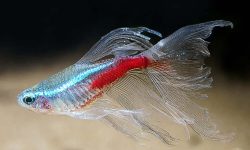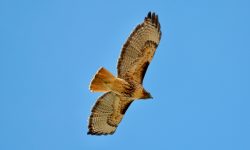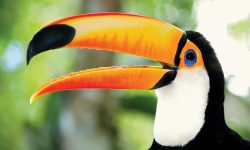Fish-eating birds, or piscivorous birds, have developed remarkable physical and behavioral adaptations—such as hooked beaks, sharp talons, webbed feet, and underwater vision—that allow them to thrive in aquatic environments. Their impressive hunting skills, striking plumage, and often long migratory patterns make them fascinating to observe. Beyond their beauty, they play a crucial ecological role and serve as indicators of healthy, balanced aquatic ecosystems, offering valuable insight for birders, conservationists, and nature lovers alike.
The Osprey – Precision Engineer of the Skies

With a distribution that spans every continent except Antarctica, the osprey (Pandion haliaetus) is a raptor whose entire diet consists almost exclusively of fish. This bird is a prime example of evolutionary fine-tuning. It has a reversible outer toe, which allows it to grasp fish with two toes in front and two behind, forming a vice-like grip. Its barbed footpads, called spicules, prevent prey from slipping, even when the bird is in flight.
Ospreys possess narrow, dense plumage, which is both water-resistant and aerodynamic. This allows for high-velocity dives from up to 30 meters in the air. Its binocular vision is adapted to correct for water refraction, allowing precise targeting.
You can spot ospreys in locations such as Chesapeake Bay in the United States, the Scottish Highlands, and the coastal estuaries of Japan. They often nest in high, isolated locations such as poles, dead trees, or cliffs, providing them an excellent vantage point.
The Great Blue Heron – The Sculptor of Stillness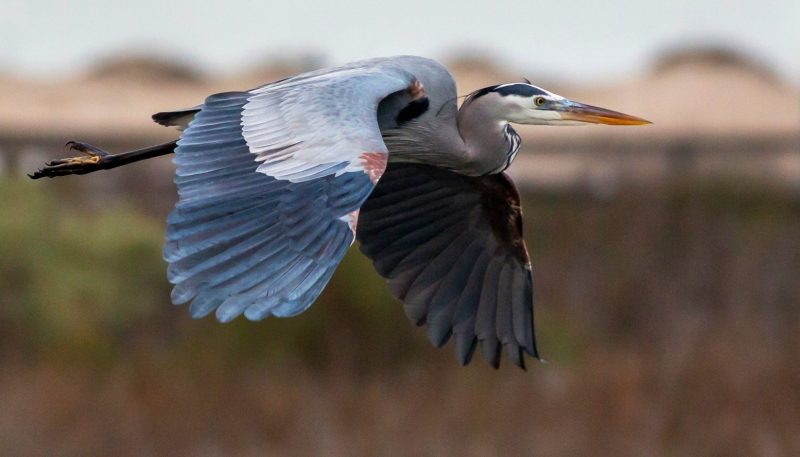
The great blue heron (Ardea herodias) is one of the largest and most recognizable wading birds in the Americas, commonly reaching heights over 1 meter. It inhabits wetlands, lakeshores, and riverbanks across North and Central America, where it plays a vital role as a top predator in aquatic food webs.
This bird’s hunting method relies on extreme stillness and slow, deliberate movements. By remaining motionless for long periods, it avoids startling potential prey such as fish, frogs, and crustaceans. When a target comes within range, the heron uses its long, flexible neck to deliver a rapid, spear-like strike with its pointed bill. The neck is folded into an S-shape when at rest, acting like a spring that stores kinetic energy, allowing for explosive movement when striking.
Biologically, the heron’s success lies in its finely tuned neuromuscular system. Specialized muscles and nerves give it precise control over the speed, angle, and force of its neck extension. This enables it to subtly adjust its aim just before the strike, even accounting for the direction and velocity of a moving fish. Scientists describe this as a form of predictive targeting, where the bird unconsciously calculates the future position of the prey based on its current motion—similar to how a human athlete might lead a moving ball.
In terms of habitat, great blue herons are most easily observed in rich wetland ecosystems. Some of the best-known regions to see them include Florida’s Everglades, the Columbia River basin in the Pacific Northwest, and coastal marshes along the Gulf of Mexico. They typically nest in large groups called rookeries, often choosing the tops of tall trees near water bodies. These colonies may contain dozens or even hundreds of nests and are reused year after year.
The African Fish Eagle – The Acoustic Sentinel of Inland Waters

The African fish eagle (Haliaeetus vocifer) is a striking raptor found across sub-Saharan Africa. With its dramatic white head and chestnut belly, and a ringing, flutelike call, it has become an iconic symbol of African wetlands.
Perched along riverbanks or lakeshores, the eagle visually scouts for fish before diving talons-first to capture prey. Its feet are equipped with spiny scales, improving grip when lifting slippery fish from the water.
To observe this magnificent bird, head to places like the Zambezi River, Lake Malawi, or Botswana’s Okavango Delta. As a top predator, its presence is a strong indicator of freshwater health.
The Kingfisher – Dive-Bombing Jewel of Rivers
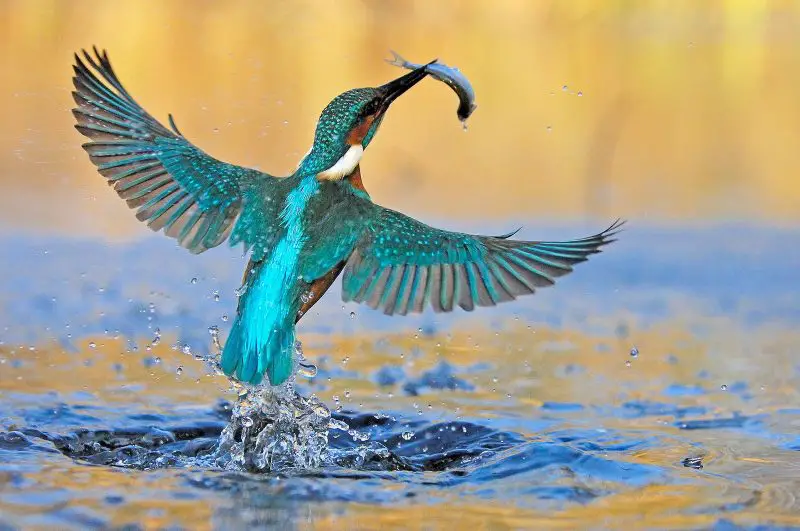
Brilliantly colored and superbly adapted for hunting, the common kingfisher (Alcedo atthis) and the belted kingfisher (Megaceryle alcyon) are among the most captivating small fish hunters. Their short, compact bodies and powerful wings enable rapid acceleration, while their sharp, dagger-like bills serve as perfect spears.
They possess vision adapted for aquatic hunting, compensating for the refraction of light in water. Their binocular vision allows them to target fish accurately while hovering. They dive head-first with stunning precision, barely making a splash.
Look for kingfishers perched quietly above clear streams in places like the River Thames, the Great Lakes, and Mekong River tributaries.
The Brown Pelican – Plunge-Diver Extraordinaire
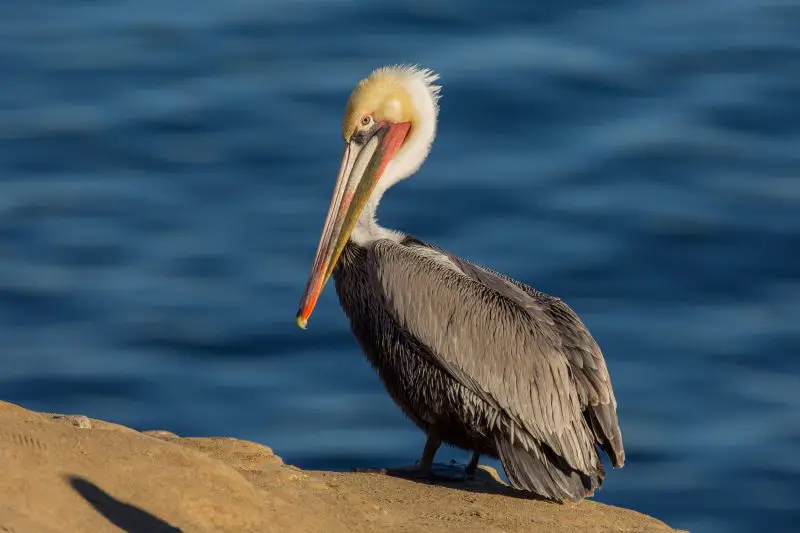
The brown pelican (Pelecanus occidentalis) is unique among pelicans in its ability to plunge dive from the air. Soaring above coastal waters, it spots fish below, then tucks its wings and crashes into the water with surprising grace.
Its elastic gular pouch expands dramatically to scoop up fish along with several liters of water. After resurfacing, the pelican tilts its head to drain the water before swallowing its prey. Its inner mandible is specially reinforced to withstand the impact.
Common along both coasts of the Americas, brown pelicans are often seen from California to Chile and North Carolina to the Caribbean. Visit places like the Channel Islands or the Yucatán Peninsula for peak viewing.
The Cormorant – The Aquatic Pursuit Specialist
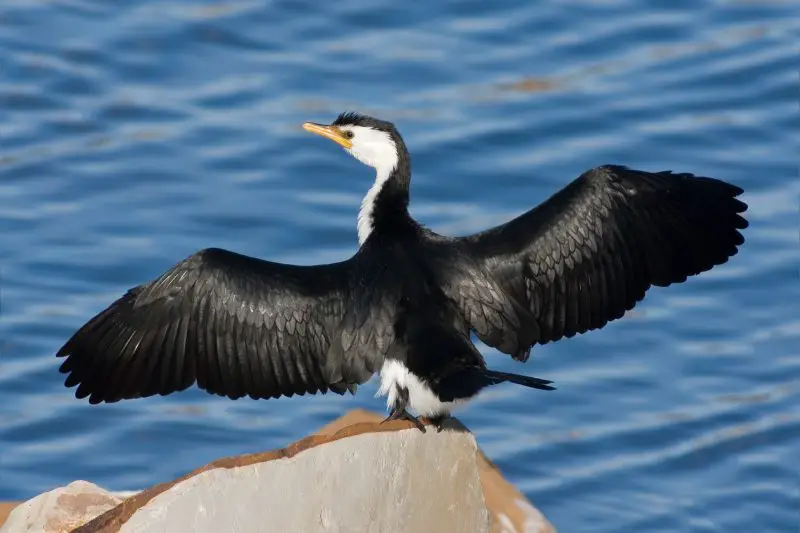
The great cormorant (Phalacrocorax carbo) and its relatives are expert underwater hunters. Their feathers absorb water, which helps reduce buoyancy and enables deeper dives.
Using powerful webbed feet, cormorants chase fish underwater like agile torpedoes. They have a unique eye structure with a reflective layer that improves vision in low light, giving them an advantage in murky or shaded waters.
Cormorants are widespread and can be found on every continent except Antarctica. Look for them in the fjords of Norway, Lake Baikal, or along the coasts of Australia. In China and Japan, cormorants are still used in traditional fishing practices, where trained birds retrieve fish for their handlers.
The Anhinga – The Snakebird of the Swamp

The anhinga (Anhinga anhinga), also known as the snakebird, is named for its long, serpentine neck. Unlike other birds, the anhinga lacks waterproof feathers, which allows it to submerge completely when hunting.
After spearing fish with its sharp bill, the anhinga surfaces and flips the fish into the air to swallow it head-first. Because their feathers get soaked, anhingas are often seen drying their wings in the sun after a dive.
They thrive in the warm, freshwater wetlands of the southeastern United States, Central America, and northern South America. The Florida Everglades is an especially rich habitat for this bird.
The Darter – The Silent Stalker of Tropics
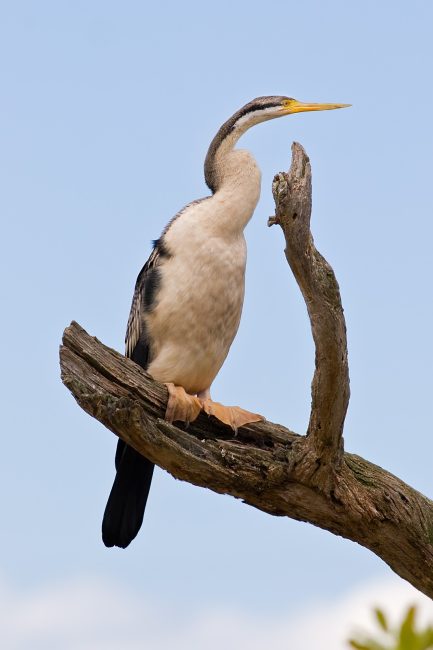
The Oriental darter (Anhinga melanogaster), often referred to as the Indian darter or snakebird, is a master of stealth in Asia’s tropical wetlands. Closely related to the American anhinga, it shares both anatomical features and hunting behavior with its New World counterpart. This bird is built for underwater pursuit, and its method of hunting is a study in precision and patience.
The darter’s most distinctive feature is its elongated neck, which coils like a spring when the bird swims. With only its slender head and neck above water, it appears snake-like, giving rise to the nickname “snakebird.” Beneath the surface, the rest of its body remains submerged, allowing it to glide silently through shallow water without disturbing potential prey. It uses its strong, webbed feet to maneuver with remarkable agility while it searches for fish.
When the moment is right, the Oriental darter strikes with astonishing speed, impaling fish on its sharply pointed bill like a living spear. The mechanics of this movement are driven by specialized musculature and neck vertebrae, which store elastic energy much like a coiled spring. The release of this stored energy powers the bird’s rapid neck extension, making its strike both sudden and forceful.
Once it has caught a fish, the darter returns to the surface and often throws its prey into the air to reposition it headfirst before swallowing. Because its feathers are only partially waterproof, water penetrates the plumage during dives. While this might seem like a disadvantage, it actually reduces buoyancy, making it easier for the bird to stay submerged while stalking prey. However, this also means the darter must dry its wings after hunting, often perching on tree branches or rocks with its wings fully spread to absorb sunlight and air-dry its plumage.
Oriental darters are widespread in South and Southeast Asia, particularly in regions with still or slow-moving freshwater such as lakes, rivers, and swamps. They thrive in well-vegetated wetlands that support abundant fish populations. Notable habitats include India’s Bharatpur Bird Sanctuary (Keoladeo National Park), the inland marshes of Sri Lanka, and Thailand’s freshwater reserves such as Khao Sam Roi Yot National Park. These locations not only provide rich feeding grounds but also safe nesting areas in tall trees or reed beds above water.
Unlike bolder waterbirds such as pelicans or cormorants, darters are shy and sensitive to human activity. They tend to retreat quickly if disturbed, making them challenging to observe up close. Birdwatchers hoping to spot this elusive predator are advised to use long-range optics and remain quiet and still while near water’s edge. Early mornings offer the best chance to see them hunting or basking with wings extended, often motionless for long periods.
Through its elegant, almost reptilian grace and unique hunting strategy, the Oriental darter exemplifies a perfectly adapted predator. As a quiet sentinel of Asia’s tropical wetlands, it highlights both the complexity and fragility of these aquatic ecosystems.
The Bald Eagle – The Majestic Opportunist

The bald eagle (Haliaeetus leucocephalus) is a powerful raptor found across North America, especially near lakes, rivers, and coastal waters. Though not exclusively a fish-eater, it relies heavily on fish during spring and summer when aquatic prey is abundant.
With a wingspan of up to 2.3 meters, the bald eagle soars effortlessly while scanning for fish using its extraordinary vision—estimated to be several times sharper than human eyesight. Once it spots a fish near the surface, it swoops down and snatches it using its curved, razor-sharp talons. The soles of its feet have rough projections that help grip slippery prey.
Apart from hunting, the bald eagle frequently engages in kleptoparasitism—stealing fish from other birds like ospreys. This opportunistic behavior reduces its energy use but can lead to dramatic aerial chases.
Bald eagles are commonly seen in Alaska, the Pacific Northwest, and around the Great Lakes. They nest in massive tree-top structures reused yearly and serve as strong indicators of healthy aquatic ecosystems.
The Black Skimmer – The Coastal Skater
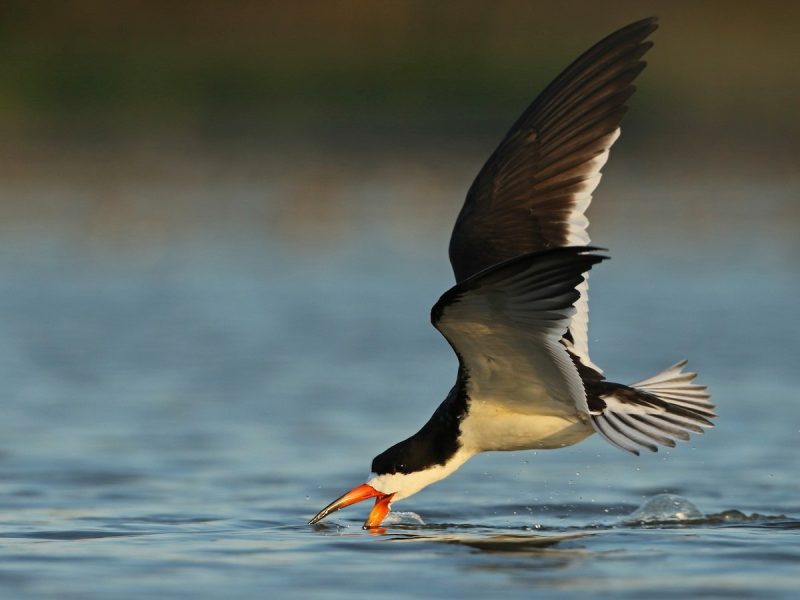
The black skimmer (Rynchops niger) is instantly recognizable by its striking black-and-white plumage and unique feeding adaptation: an elongated lower mandible that extends well beyond the upper. As it flies just above the water’s surface, the lower bill skims along like a blade. When it contacts a fish or crustacean, the upper mandible snaps down with reflexive speed, capturing prey in a motion as precise as it is silent.
This feeding strategy, called skimming, is rare among birds and requires superb coordination and sensory feedback. Skimmers rely on touch more than sight, which is why they often forage at dusk or dawn when visibility is low and competition is reduced. Their long, narrow wings and buoyant bodies support a smooth, gliding flight over calm coastal waters.
Black skimmers are found along the Atlantic and Gulf coasts of the Americas—from the eastern United States to Argentina—where they inhabit sandy beaches, estuaries, and lagoons. They often nest in colonies on open sandbars or barrier islands, relying on camouflage and group vigilance to protect their chicks from predators and storms.
The Snowy Egret – The Elegant Forager
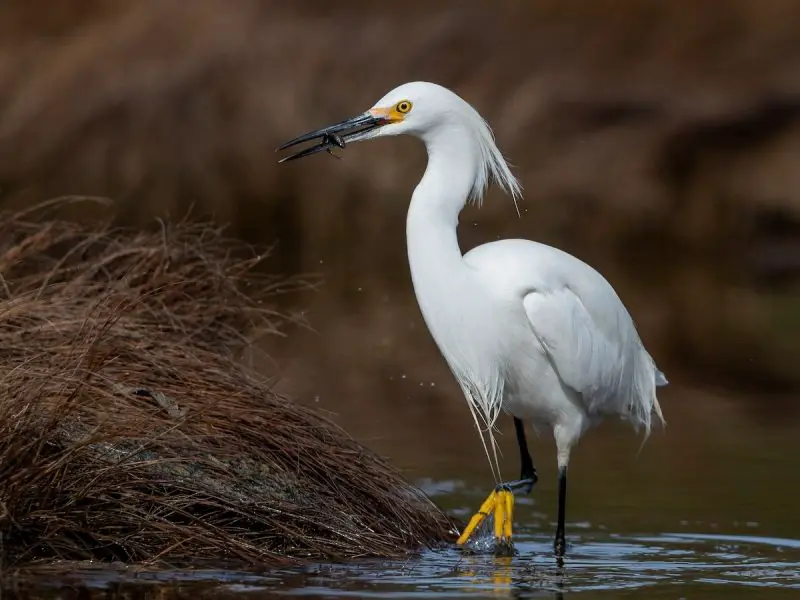
The snowy egret (Egretta thula) is a graceful wading bird known for its snowy-white feathers, slender black bill, and striking yellow feet—aptly nicknamed “golden slippers.” While elegant in appearance, it is a dynamic and tactical hunter in shallow waters.
One of its most distinctive behaviors is foot-stirring: the egret shuffles its vividly colored feet along the mud or sand to startle small fish, crustaceans, or insects into motion. Once prey is exposed, it strikes with lightning-fast precision using its fine, pointed bill. This active foraging is often accompanied by sudden bursts of movement—hopping, running, or spreading wings to create shade and improve visibility.
Snowy egrets thrive in wetlands, tidal flats, and estuarine environments, especially in the southeastern U.S., Central America, and the Caribbean. They are frequently seen in states like Florida and Louisiana, often foraging in groups or nesting in mixed heron colonies high in mangroves or swamp trees.
Their dramatic feeding dances and vivid contrasts make them one of the most captivating wetland birds to observe.
The Great Egret – The Royal Spearman
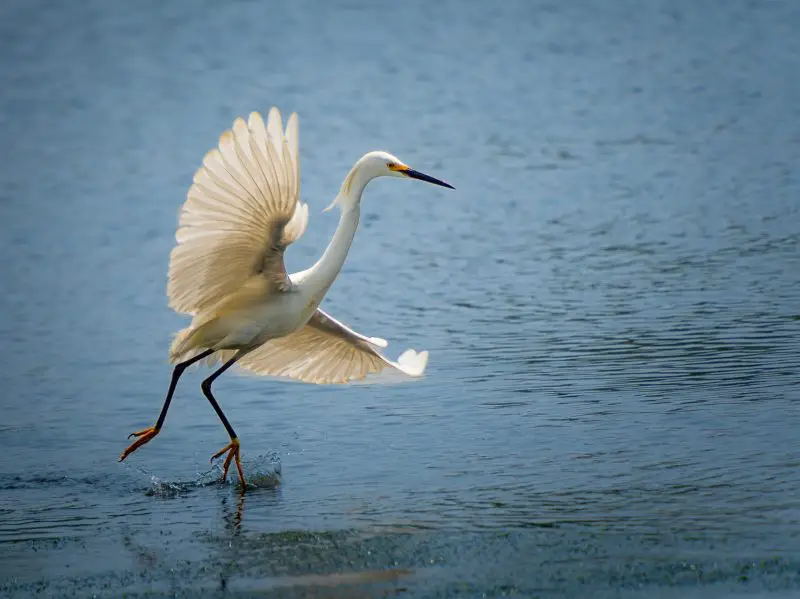
The great egret (Ardea alba) is a tall, stately wading bird recognized by its pure white plumage, long black legs, and dagger-like yellow bill. Significantly larger than the snowy egret, it reaches nearly 1 meter in height and is widely distributed across temperate and tropical regions on every continent except Antarctica.
As a patient ambush predator, the great egret uses a sit-and-wait strategy in shallow waters. It remains perfectly still for long periods, watching for movement below the surface. When prey such as fish, amphibians, or aquatic insects come within reach, it delivers a rapid neck extension and precise thrust, skewering the target with its sharp bill.
Its hunting success relies on exceptional visual focus and neuromuscular control, allowing it to calculate depth, refraction, and strike angle. The bird’s posture—elegant neck curve and poised stillness—has made it an iconic subject in wildlife photography and art.
Great egrets are found in a range of wetland habitats, from marshes and riverbanks to flooded fields and estuaries. Key locations include the Nile Delta in East Africa, the Camargue wetlands in southern France, and coastal zones of the southeastern United States.
Once threatened by plume hunting in the 19th century, the species has rebounded thanks to wetland conservation efforts and now stands as a global symbol of avian beauty and ecological resilience.
The Caspian Tern – The Bold Diver
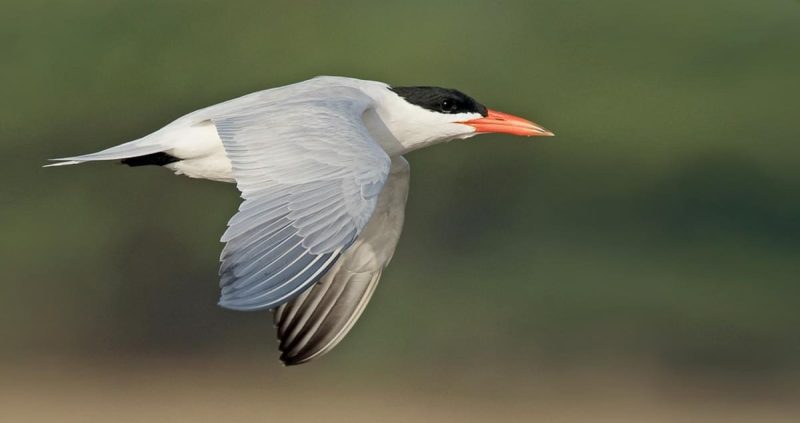
The Caspian tern (Hydroprogne caspia) holds the title of the largest tern species in the world, with a robust body, thick red-orange bill, and wings spanning up to 1.4 meters. Unlike the delicate appearance of smaller terns, it exudes strength and precision.
An aerial hunter, the Caspian tern specializes in plunge-diving. From high above the water, it uses its sharp vision to spot fish near the surface. After locking in on its target, it tucks its wings and descends rapidly in a steep dive, hitting the water with force and accuracy. Its large, muscular body provides the momentum needed to penetrate the surface and snatch prey in a single motion.
Adapted for both freshwater and coastal habitats, Caspian terns breed in noisy colonies on isolated islands, sandbars, or lake margins, where they build shallow scrapes in gravel or sand. Important breeding sites include the Baltic Sea coasts, Utah’s Great Salt Lake, and the alkaline lakes of the East African Rift Valley. During migration, they can travel vast distances between continents, following waterways rich in fish.
As bold as they are efficient, Caspian terns often chase off larger birds to defend feeding areas or nesting grounds, showing a level of territorial aggression uncommon in other tern species.
The Red-Throated Loon – The Subsurface Seeker

The red-throated loon (Gavia stellata) is the smallest and most agile of all loon species, built for speed and precision beneath the water. With a sleek, torpedo-shaped body and rear-set legs, it is perfectly adapted for pursuit diving—chasing fish entirely underwater using rapid propulsion.
Rather than relying on ambush or plunge-diving, this loon actively swims after its prey, using strong webbed feet and precise steering to navigate. Its dense bones, unlike the hollow bones of most birds, help it submerge quickly and maintain stability while diving.
During the breeding season, red-throated loons are found across Arctic and subarctic tundra lakes in Canada, Alaska, Greenland, and northern Scandinavia. Unlike other loons, they can take off from relatively small water bodies due to their lighter build and higher wingbeat frequency.
In winter, they migrate to temperate coastlines, where they feed in sheltered bays and estuaries. Their haunting calls and striking red throat patch in breeding plumage make them iconic symbols of northern wilderness. Outside the breeding season, their plumage becomes more subdued, blending into gray and white tones to match wintry seas.
The red-throated loon’s dependence on clean, undisturbed aquatic habitats makes it a sensitive indicator species for environmental change, especially in Arctic ecosystems.
The American Dipper – The River Acrobat

The American dipper (Cinclus mexicanus) is a remarkable songbird adapted to life in cold, fast-flowing streams. About the size of a robin, this slate-gray bird defies typical avian behavior by foraging entirely in turbulent, icy waters.
Unlike most birds, the dipper can walk underwater, using its strong legs to grip streambeds and its partially extended wings for balance and propulsion. It feeds on small fish, insect larvae, and other aquatic invertebrates, which it locates by sight in clear, oxygen-rich water. A specialized nictitating membrane protects its eyes underwater, while nasal flaps seal the nostrils during submersion.
This bird’s unique adaptations also include dense plumage, a high metabolic rate, and large oil glands that waterproof its feathers—crucial for surviving frigid alpine streams. Its song, surprisingly loud for its size, echoes above rushing water and helps establish territory in noisy environments.
The American dipper is found year-round in mountainous regions of western North America, from Alaska through the Rockies and Sierra Nevada down to central Mexico. It nests on rock ledges or behind waterfalls, where the constant spray deters predators.
As a biological indicator, the dipper signals the health of freshwater ecosystems. Its presence confirms unpolluted, well-oxygenated waters, making it a key species in stream conservation efforts.
Conclusion – Guardians and Indicators of Aquatic Health
Each of these piscivorous birds plays a distinct role in its ecosystem. From plunge divers to stealth stalkers, their presence signals healthy prey populations, functional ecosystems, and ecological balance. Protecting these birds means conserving the lifeblood of wetlands, rivers, and coastal waters, ensuring that the skies and waterways continue to thrive in harmony.
Whether you observe an osprey diving at dawn or a kingfisher zipping through mangroves, each encounter is a reminder of nature’s engineering and aesthetic brilliance. For bird enthusiasts and conservationists alike, these fascinating fish eaters offer not just visual delight but also profound ecological insight.

